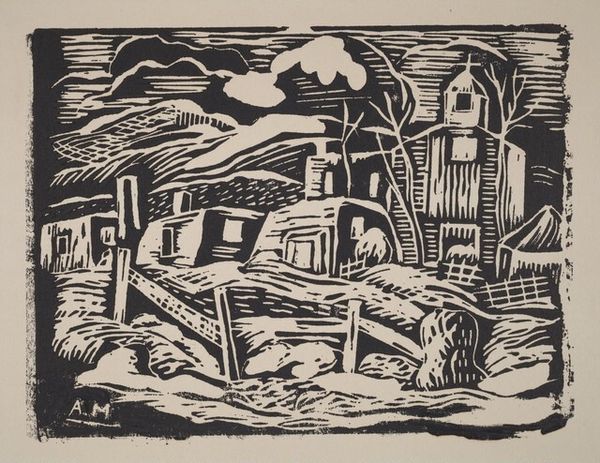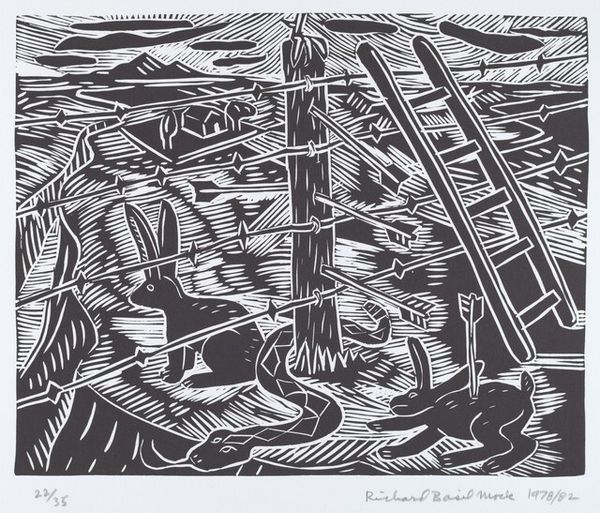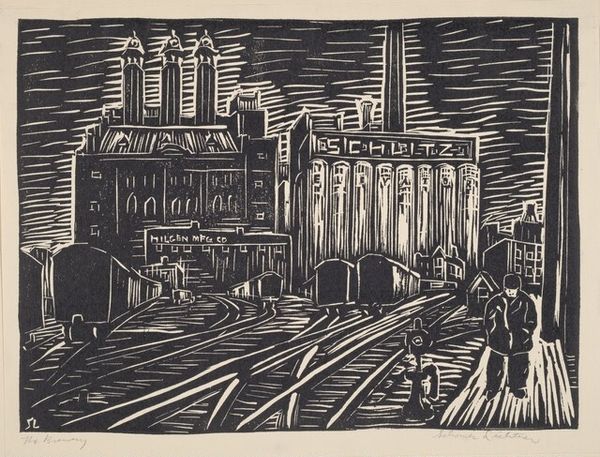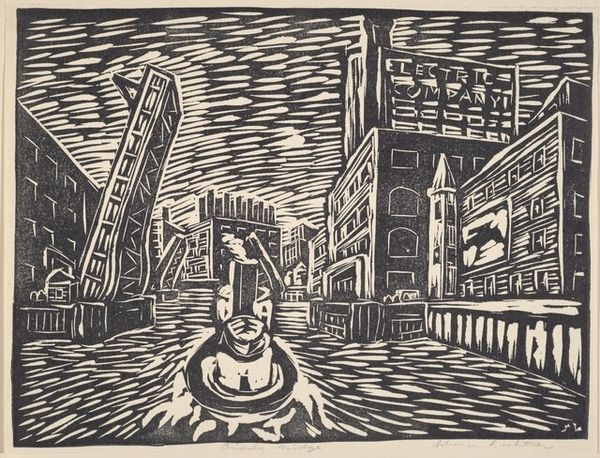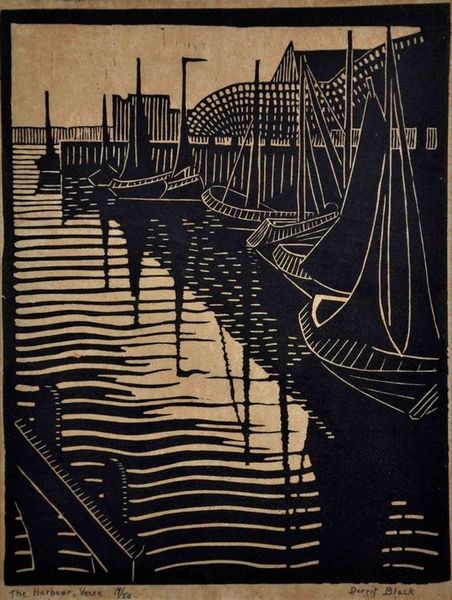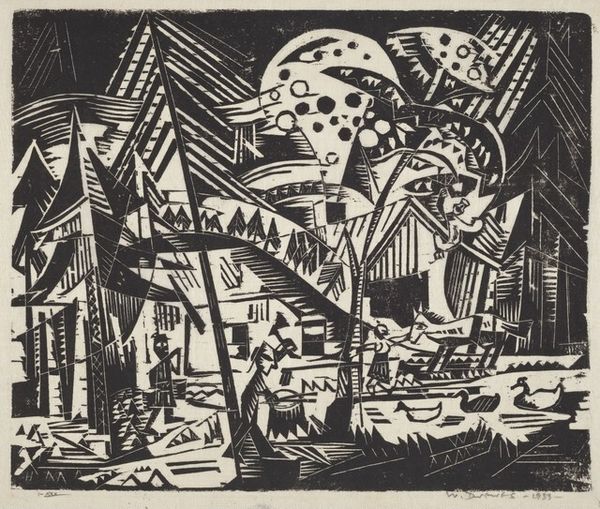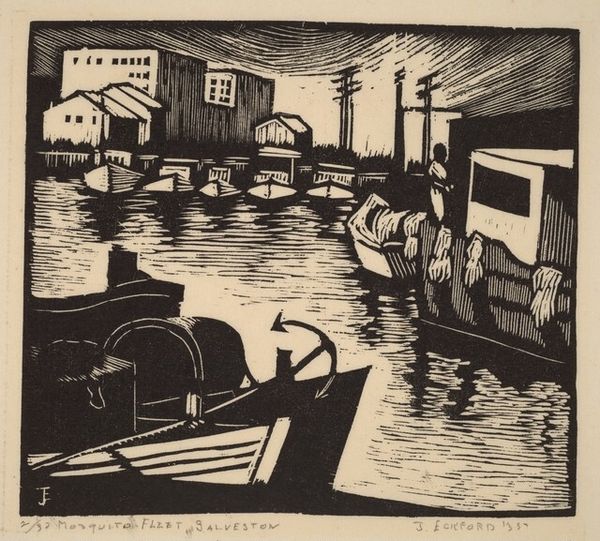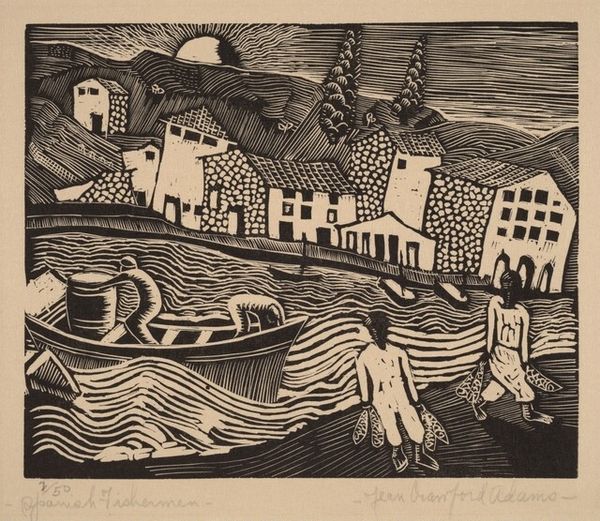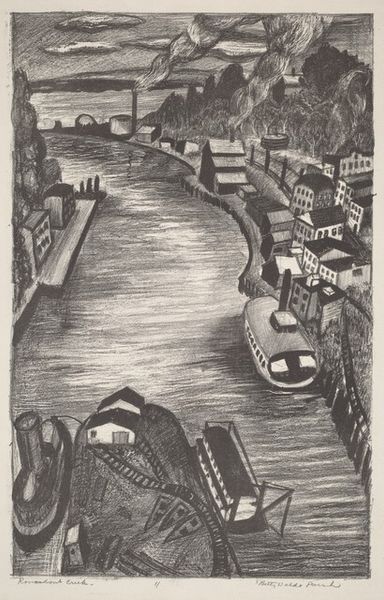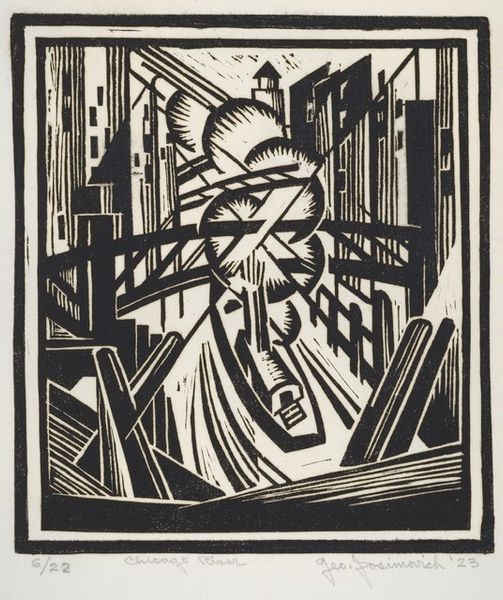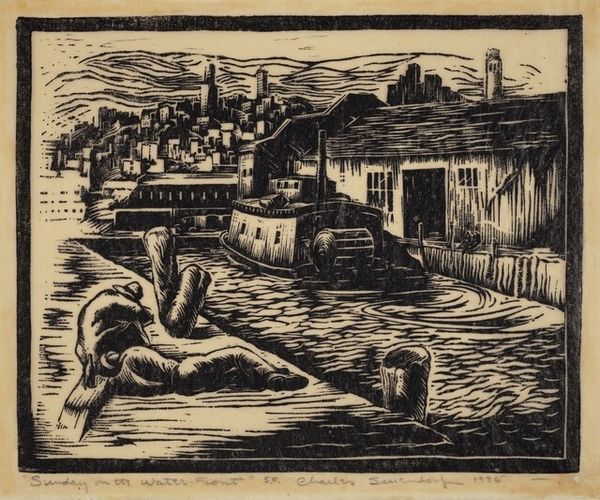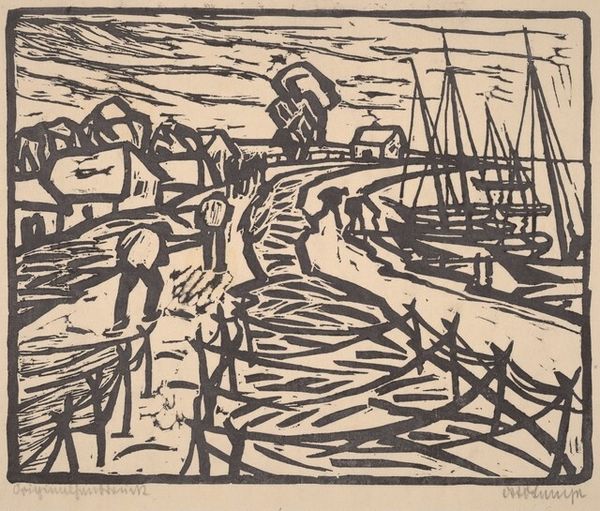
Copyright: National Gallery of Art: CC0 1.0
Curator: Schomer Lichtner's 1932 woodcut, "The Collier," is a striking image of a large steamship dominating a busy harbor. Editor: It's the heavy blacks against stark whites that first grab me, giving it this almost oppressive industrial feel. There’s a definite unease in the angular lines. Curator: Absolutely, the high contrast typical of woodcut printing emphasizes the sheer bulk of the materials depicted: metal, water, and stone. Consider the labor involved not just in the ship, but in quarrying those city blocks rendered in the background. Editor: It also brings into sharp focus questions about class and labor during the Depression era. The collier represents the working class, right? But is Lichtner glorifying this labor or commenting on the worker's alienation within this industrialized landscape? Curator: Lichtner was deeply concerned with reflecting social realities. We need to remember the materiality here, the wood itself, likely locally sourced, and the repetitive physical action of carving, mirroring the cyclical nature of the work performed by the depicted laborer. Editor: The limited perspective emphasizes that overwhelming sense of scale, the individual dwarfed by the machines of industry. There's very little sky; our viewpoint is from the level of the water, suggesting a proximity to—almost immersion in—the physical realities of this world. Curator: The deliberate and time-consuming nature of woodcut as a process also demands a certain slowing down. It's not a quick sketch; the artist clearly has engaged with and pondered the forms present. It demands our attention, urging us to truly consider the making as much as the subject itself. Editor: That act of "slowing down" that you mention could itself be interpreted as a kind of resistance against the ever-increasing pace of industrialization. The print serves as a kind of visual anchor, calling us to analyze our own relationship with that progress. Curator: Considering "The Collier", I’m drawn back to its direct connection with labor through its own meticulous production, offering insight to the tangible, material processes underpinning modern life. Editor: I see "The Collier" as an entry point to reflecting on labor conditions then and now, inviting a more thoughtful investigation into our collective narrative with labor, and its legacy, so deeply rooted in our society.
Comments
No comments
Be the first to comment and join the conversation on the ultimate creative platform.
